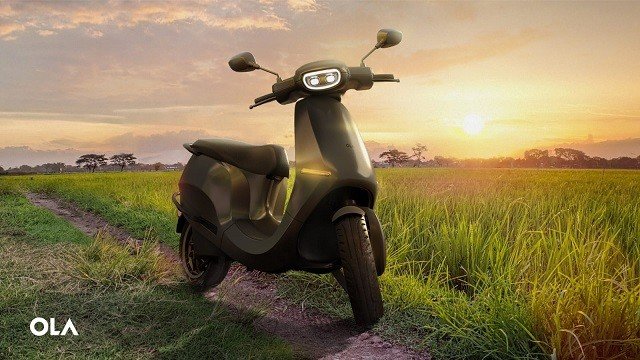Ola Electric Mobility is poised to go public sooner than its creator had originally anticipated, illustrating the Indian startup’s rapid development since it began offering electric scooters for sale in late 2021.
Bhavish Aggarwal, the company’s founder and chief executive officer, was speaking in an interview while sipping an iced Vietnamese coffee in New Delhi’s crowded Connaught Place. “I thought it would take me four to six years of revenue to go public,” he said. “I can already tell that it will be a lot sooner. Ola Electric has developed and grown more quickly than I had anticipated due to the market’s positive response.
With a 38 percent market share, the company has emerged as the industry leader for electric scooters in India. SoftBank Group and Tiger Global Management are among its investors. Data from the Society of Manufacturers of Electric Vehicles shows that since December 2021, it has sold more than 239,000 electric scooters.
While the majority of Ola Electric’s customers are already fully converted, the majority of the company’s customers initially originated from first-time scooter owners, according to 37-year-old Aggarwal, who was wearing a black Nehru jacket made popular by Jawaharlal Nehru, India’s first prime minister, and later The Beatles.

Ola making new connections
Although the deadlines may alter, Aggarwal has goals to grow. He aims to introduce a motorbike by the end of this year and a battery-powered automobile in 2024. According to Aggarwal, whose initial business, ANI Technologies, manages Ola ride-hailing operations, he also continues to examine exporting scooters to Southeast Asia, Latin America, and Europe. This idea was shelved because to the high domestic demand.
According to a Bloomberg News report from August 2021, Ola Cabs made it as far as choosing banks for a $1 billion (approximately Rs. 8,217 crore) IPO in Mumbai, but that never happened. According to Aggarwal, the business, which competes with Uber Technologies Inc., is “profitable for us now,” in an interview he gave last week in Delhi. He didn’t address any potential fresh listing attempts or provide a timeframe for a potential Ola Electric IPO.
Aggarwal is competing with Mukesh Ambani’s Reliance Industries by constructing a 115-acre battery factory in southern India. The facility would produce lithium-ion cells primarily for Ola Electric vehicles as well as perhaps energy storage and home energy solutions.
According to Aggarwal, a graduate of the Indian Institute of Technology in Mumbai, producing EV components in-house will enable Ola Electric to sell cars on a larger scale and boost margins. In a market where the majority of EVs are converted from petrol models, the business will have more control over quality and costs by designing vehicles from the ground up, he claimed.
It won’t be simple to succeed with electric vehicles. The majority of vehicles on Indian roadways are combustion-engine vehicles, which continue to be the preferred choice for personal transportation. The dearth of charging stations in the nation and the expensive cost of EVs have prevented their widespread use. According to BloombergNEF, nationwide sales in 2017 were 49,800, or roughly 1.3% of the 3.8 million passenger automobiles sold.
Ola Electric, based in Bengaluru, competes against more seasoned producers like Tata Motors, the market leader, Mahindra & Mahindra, and even Elon Musk’s Tesla, which is considering investing in India.

Some bumps along the road
The scooter division of Ola Electric has also been impacted by quality and fire problems, delivery delays caused by chip shortages, and delivery delays. Sales decreased by 39% to 17,590 units in June from the prior month, a pattern that also affected other automakers when the government cut incentives provided under the programme for faster adoption and manufacturing of (hybrid and) electric vehicles.
Nevertheless, according to Aggarwal, faster technology has reduced the time it takes to get a product to market. Artificial intelligence and digital simulation are used in manufacturing by Ola Electric to reduce production time. He declared, “I’m developing a technology-focused network of businesses. “Computing and AI will be yet another major technological issue for our generation. So we’ll take action.
A so-called flat organisation, according to Aggarwal, who participates in everyday decision-making at his company, which employs approximately 7,000 people, speeds up the production process.
What would take a corporation a month to do, we complete in a single day, he claimed. “Our execution attitude is that we want to execute things as best as we can without sacrificing quality or safety. Additionally, complete it as quickly and cheaply as you can.
Aggarwal is confident that his plan to oversee multiple EV supply chain stages will save costs and enhance product performance and design.
“Tesla is for the West, Ola is for the rest,” he declared.


